Holiday plants that are toxic to cats
lily
When we think of lilies and their toxicity to cats, we usually think of real lilies (Lilium genus.), Oriental, Asian, Easter, and Rose Lily. Although not a member of the true lily family, Hemerocallis, or daylily, poses similar concerns when ingested by cats.
True lilies are a group of plants that make beautiful holiday decorations, whether grown in pots or in freshly cut bouquets. Do not confuse it with other plants that have lily in their name, such as Peruvian lily, calla lily, peace lily, or lily of the valley. These plants should be avoided as they can pose their own unique concerns.
unfortunately, Lilium genus. and Genus Hemerocallis. Lilies can damage your cat’s kidneys and cause kidney failure and even death if treatment is not started immediately. Exposures that cause kidney damage can occur if you eat parts of the plant, drink the water from a vase, or lick pollen from your cat’s fur after coming into contact with the flowers.
If your cat ingests any part of the lily plant containing pollen or water, contact your veterinarian urgently or Pet poisoning helpline® Contact us today at 855-764-7661.
christmas tree
There are many different types of Christmas trees: pine, fir, spruce, and artificial. Although live tree needles are considered only mildly toxic to cats, they can still pose health concerns if your cat ingests live or artificial tree needles.
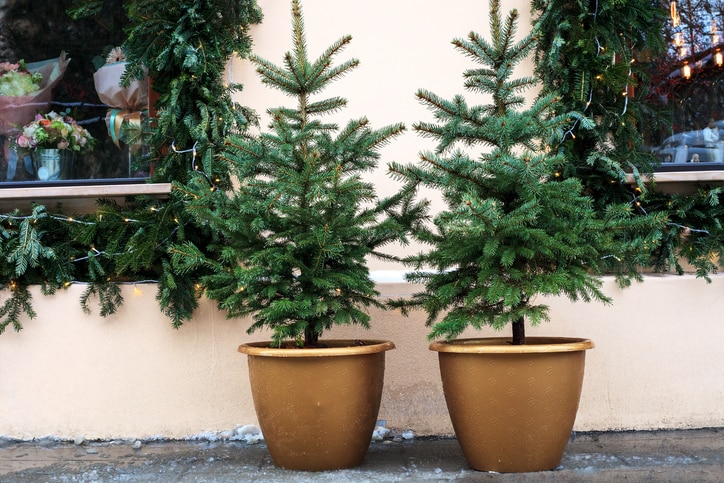
The oil from live tree needles can irritate the gastrointestinal tract, cause stomach upset, and cause vomiting and loss of appetite. The needles themselves, both live and artificial, can also irritate the gastrointestinal tract due to their shape and lack of flexibility.
Unfortunately, this means that if your cat eats enough live or artificial tree needles, it can cause vomiting, diarrhea, loss of appetite, and even intestinal blockage.
Depending on the severity of the symptoms, veterinary treatment may be necessary to get your cat back to health. Contact your veterinarian or Pet Poison Helpline to determine next steps.
Yew
Yew is an evergreen plant that produces beautiful red berries from autumn to winter. During the holidays, they serve as outdoor decorations, indoor potted plants, table centerpieces, or garlands.
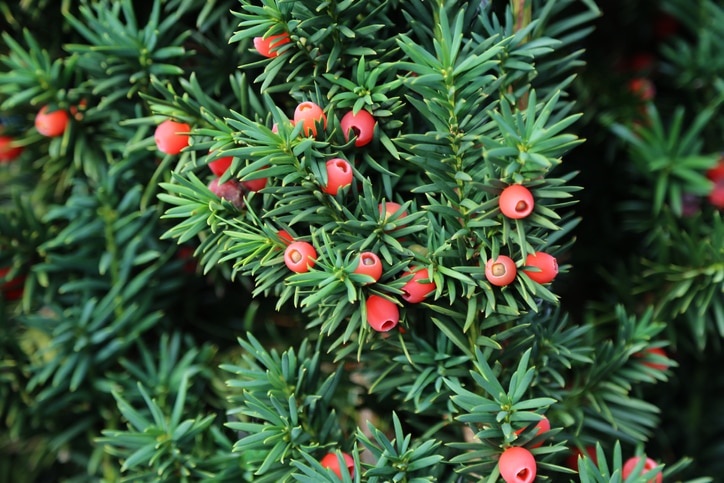
Unfortunately, if your cat ingests a yew, eating any part of the berry other than the red pulp (outer layer or skin) can cause serious poisoning.
Signs of poisoning include vomiting, diarrhea, difficulty walking, seizures, and abnormal heart rate. If swallowed by cat Any If you find any parts of the yew plant (such as chewing branches), contact your emergency veterinarian or Pet Poison Helpline for next steps.
holly
Holly is used in a variety of holiday decorations, from wreaths to wreaths to potted arrangements. It is especially famous for its glossy dark green leaves and contrasting red berries. Holly leaves are waxy and prickly, so cats may not be interested in eating them to begin with, which is ideal.
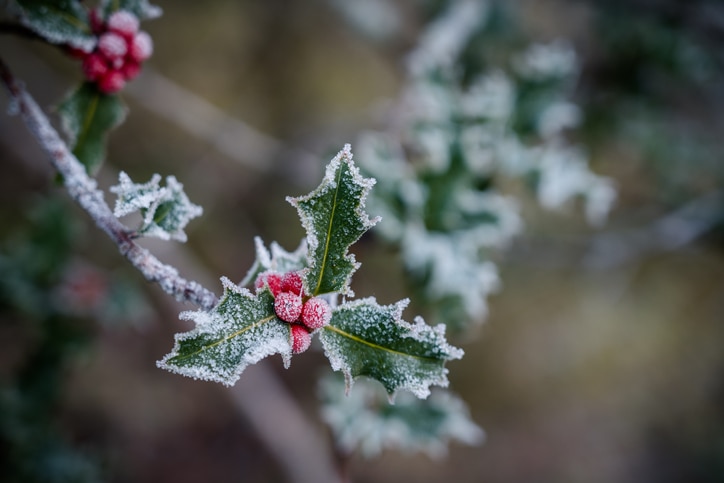
If your cat ingests a few leaves or berries from the plant, it can cause mild vomiting and diarrhea. Eating large amounts of this plant or fruit can cause severe vomiting, diarrhea, loss of appetite, and difficulty walking.
If your cat eats holly and becomes ill, contact your emergency veterinarian or Pet Poison Helpline for next steps.
Our Pet Poison Helpline puts you in touch with a trained veterinary toxicology expert who can help you determine whether you should be concerned about your cat’s exposure to toxins and what next steps to take. Masu.
mistletoe
If you’re looking for a holiday kiss or a beautiful green decoration, you can include mistletoe in your holiday decorations. Although this plant produces fruit, it is often displayed in homes without fruit or with artificial fruit.
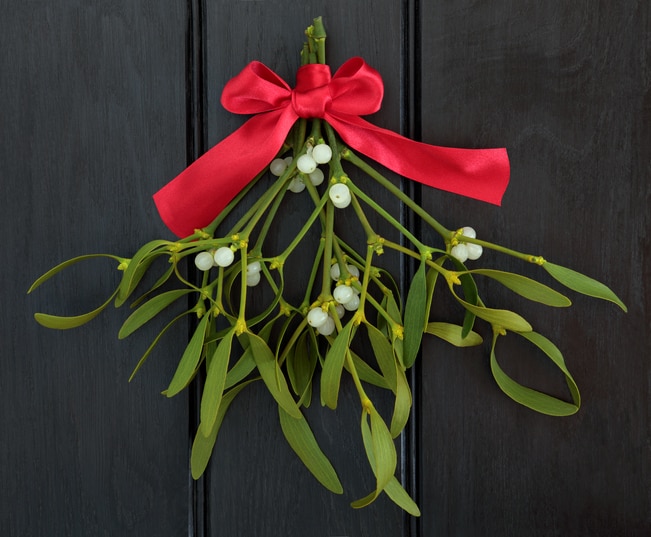
There are two main types of mistletoe: American and European. Fortunately, mistletoe, which is most commonly found in the United States, doesn’t have to worry if your cat takes a few bites. If you are unsure of the type of mistletoe, check the product label or contact your florist before purchasing.
If your cat eats some mistletoe, it may experience symptoms such as vomiting, diarrhea, and loss of appetite. If you are unsure of the type of mistletoe, check the product label or contact your florist before purchasing.
However, if you ingest more than a few mouthfuls of mistletoe, or even small amounts of European mistletoe, you may experience abnormal heart rate and abnormal blood pressure.
If you think your cat may have ingested a large amount of mistletoe, rather than just a bite or bite, we recommend contacting your veterinarian for testing. This way, your veterinarian can make sure your cat’s heart rate and blood pressure are normal and prescribe medication to resolve any gastrointestinal complaints if necessary.
poinsettia
Poinsettias are considered classic holiday plants. It is usually decorated with potted plants, but can also be decorated with wreaths, garlands, and Christmas trees. lush leaves and flowers May cause gastrointestinal problems such as vomiting if ingested by cats.
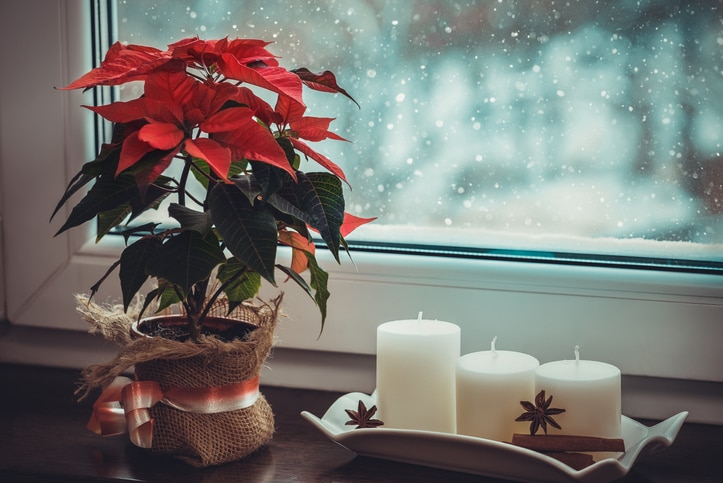
Symptoms may be mild enough not to require veterinary attention, but some cats may continue to vomit and require veterinary attention. If your cat continues to vomit after ingesting some poinsettia, contact your veterinarian.
What to do if your cat ingests a poisonous holiday plant
If your cat’s family member ingests a potentially poisonous holiday plant, move the plant to a place your cat cannot access. But don’t throw it away, as you may need to identify it.
If your cat’s grooming leaves residue, such as pollen or tree sap, gently wipe it off with a damp washcloth or towel to prevent your cat from ingesting the pollen when it tries to groom itself.
Contact the Pet Poison Helpline at 855-764-7661 and you’ll be connected to a trained veterinary toxicology expert who can tell you if you should be concerned about your cat’s plant exposure. It will help you decide your next steps. You can also contact Chewy’s Veterinarian Connection Live chat with your veterinarian about what to do.
They will assess the exposure and determine if your pet requires medical attention or if home monitoring is sufficient.
If you are sure which plants your cat was exposed to, be sure to provide that information during the call. This will help your veterinarian provide the best next steps.
If you notice your cat exhibiting severe symptoms, such as becoming unresponsive, having trouble breathing, or having a seizure, seek emergency veterinary care immediately.
Being aware of potential concerns about common holiday plants can help keep your furry family member safe this holiday season. If you are concerned that your cat has ingested a plant, it is best to stay safe and seek guidance immediately.




